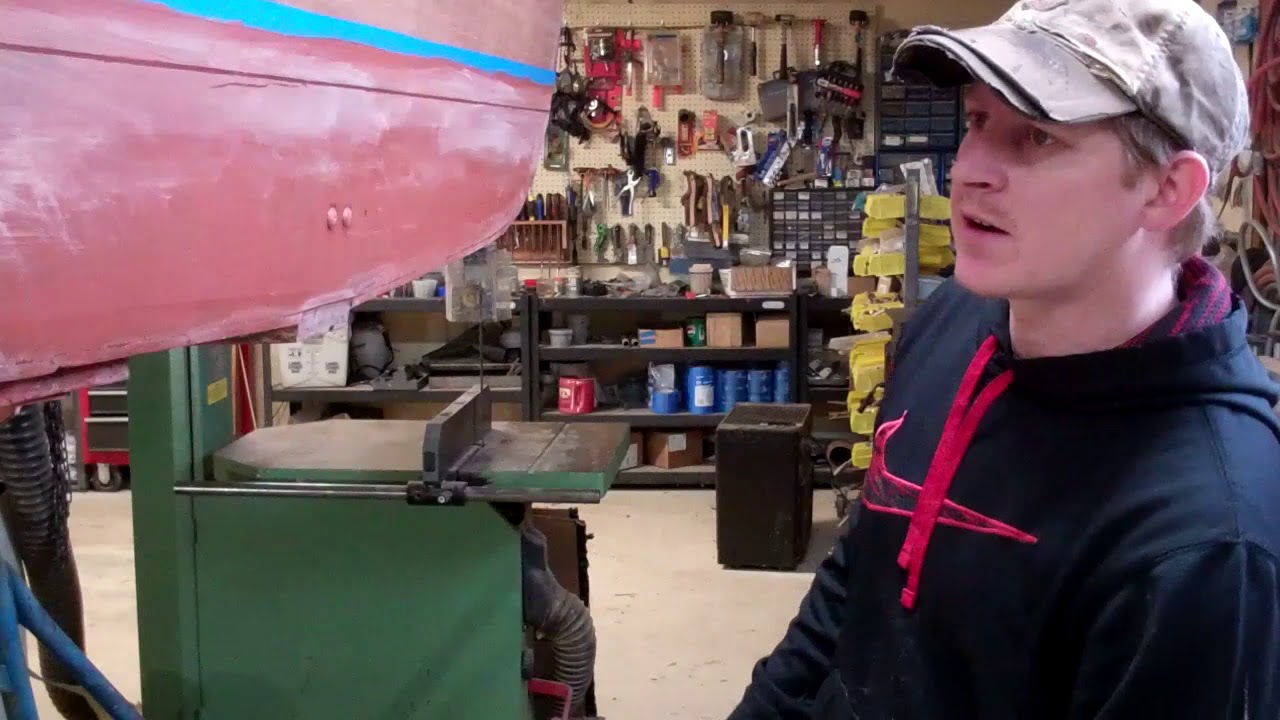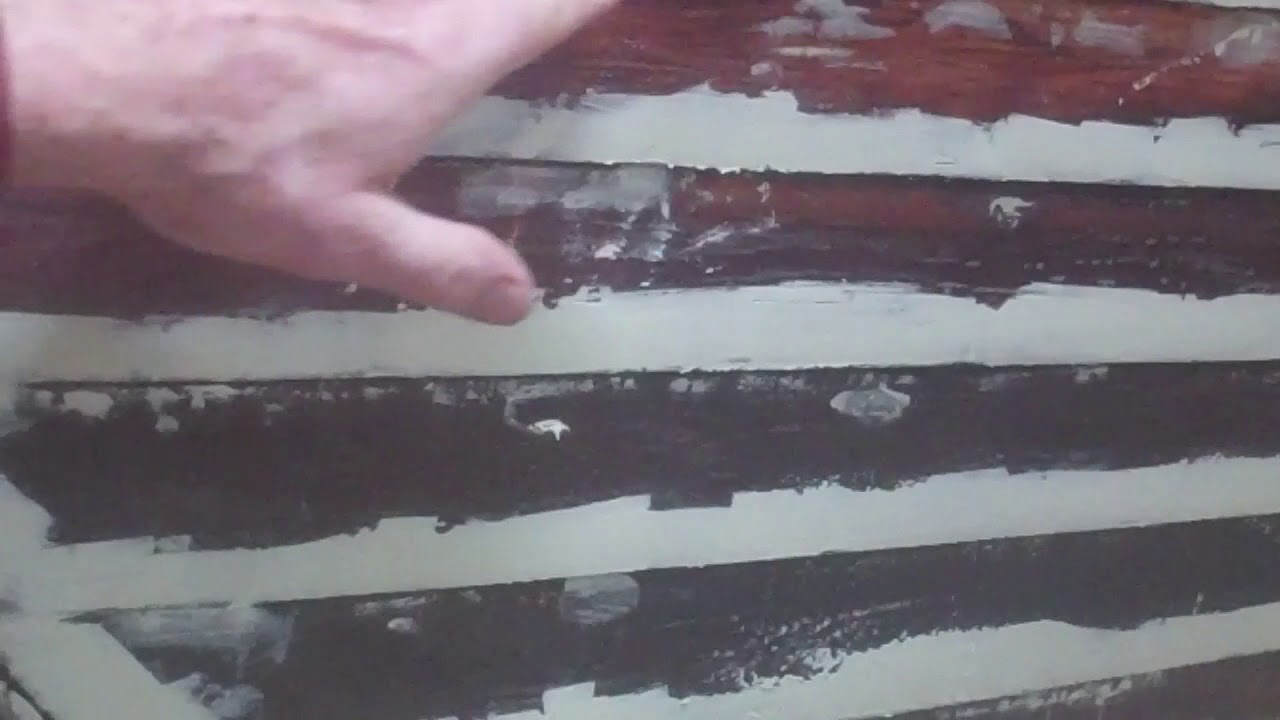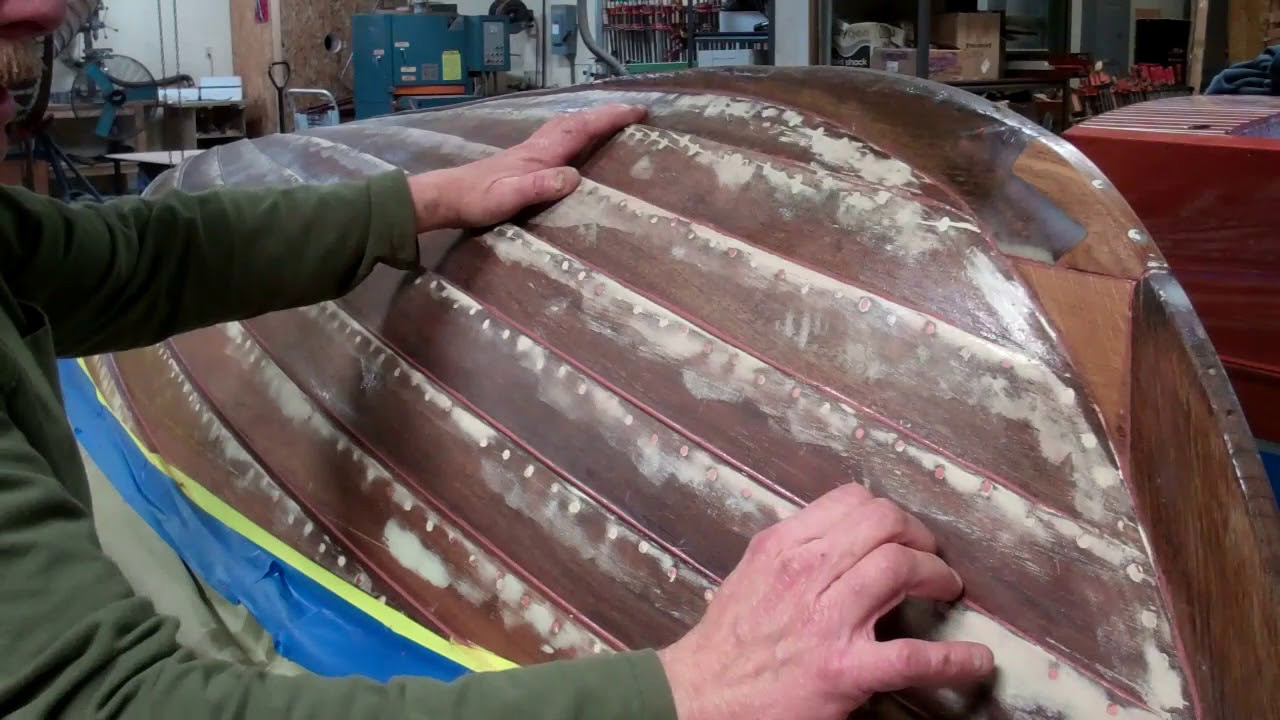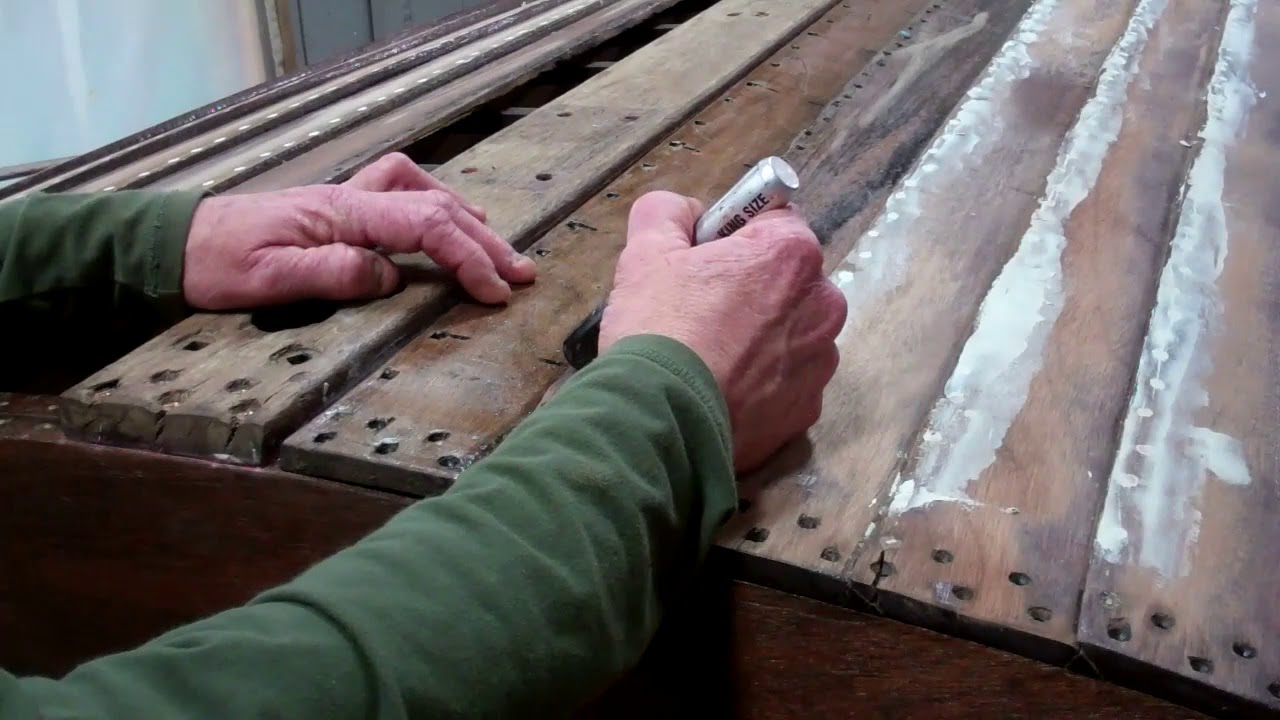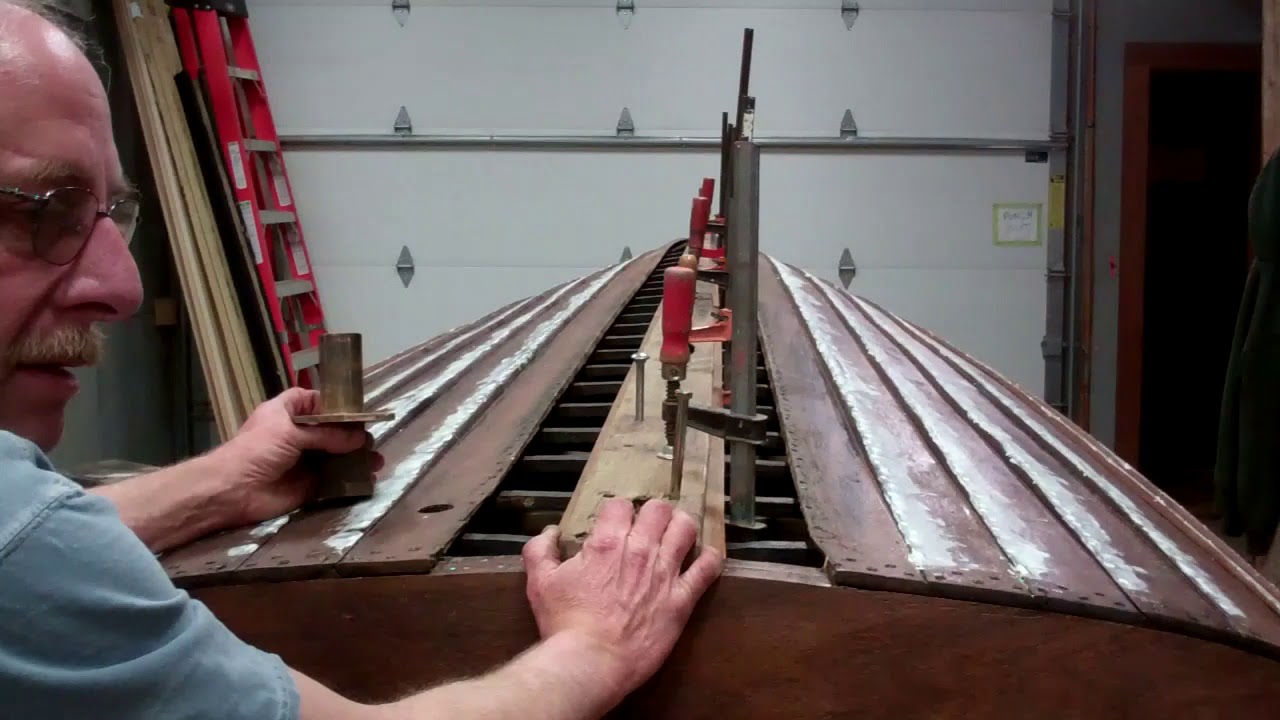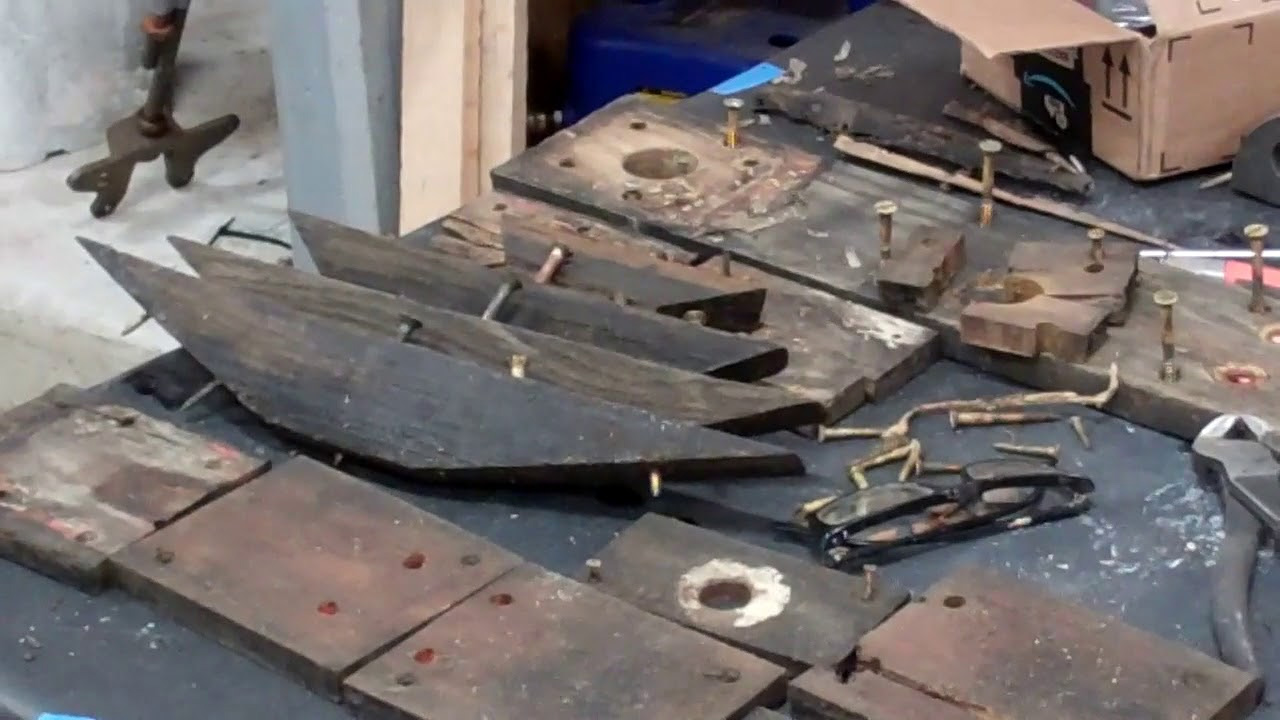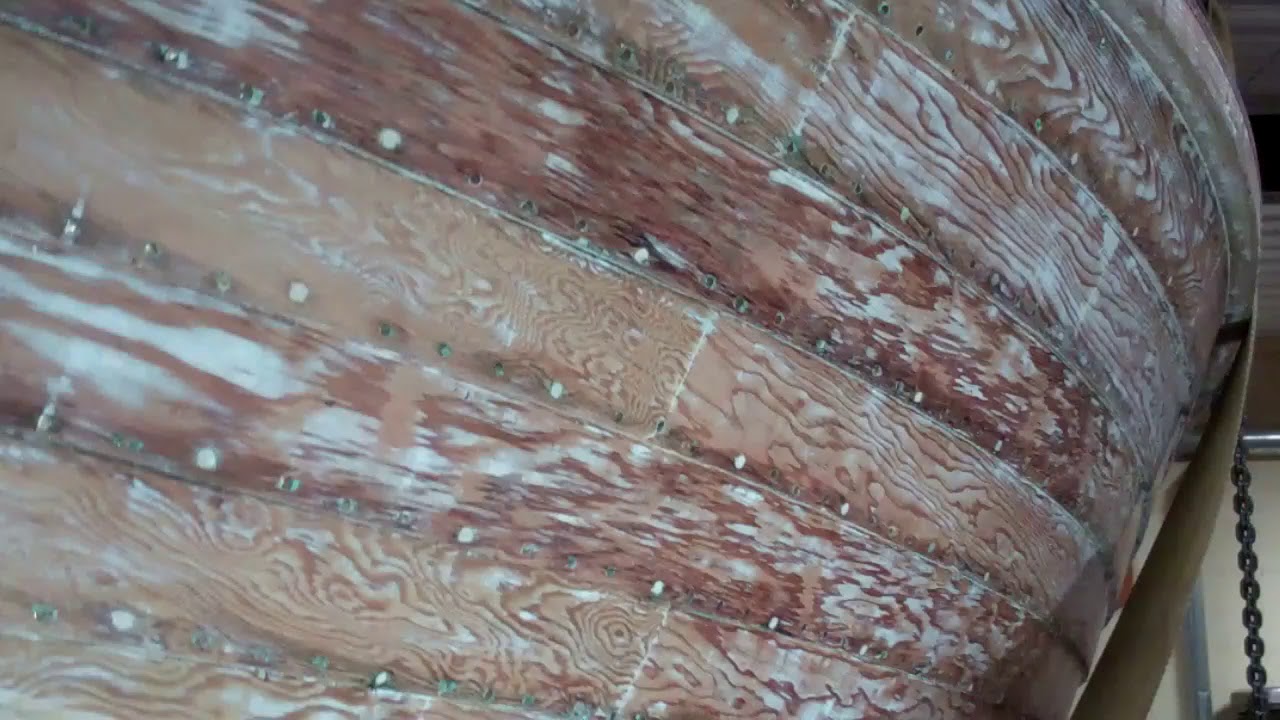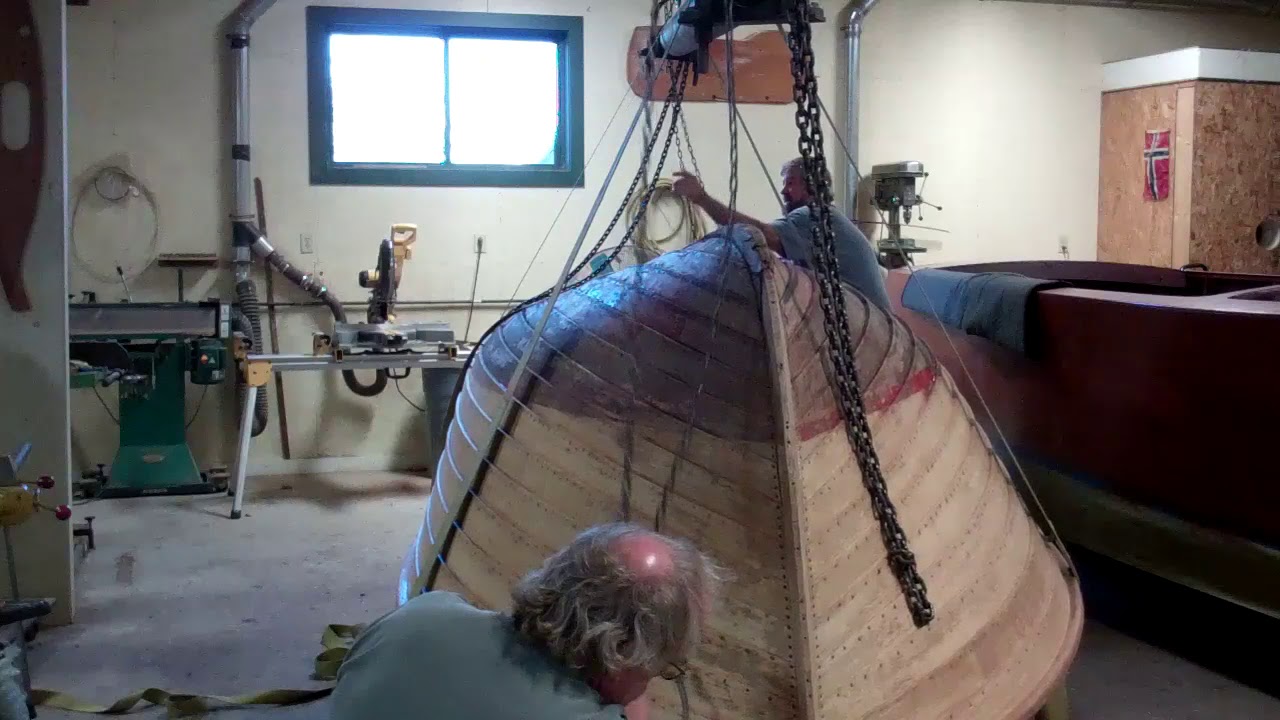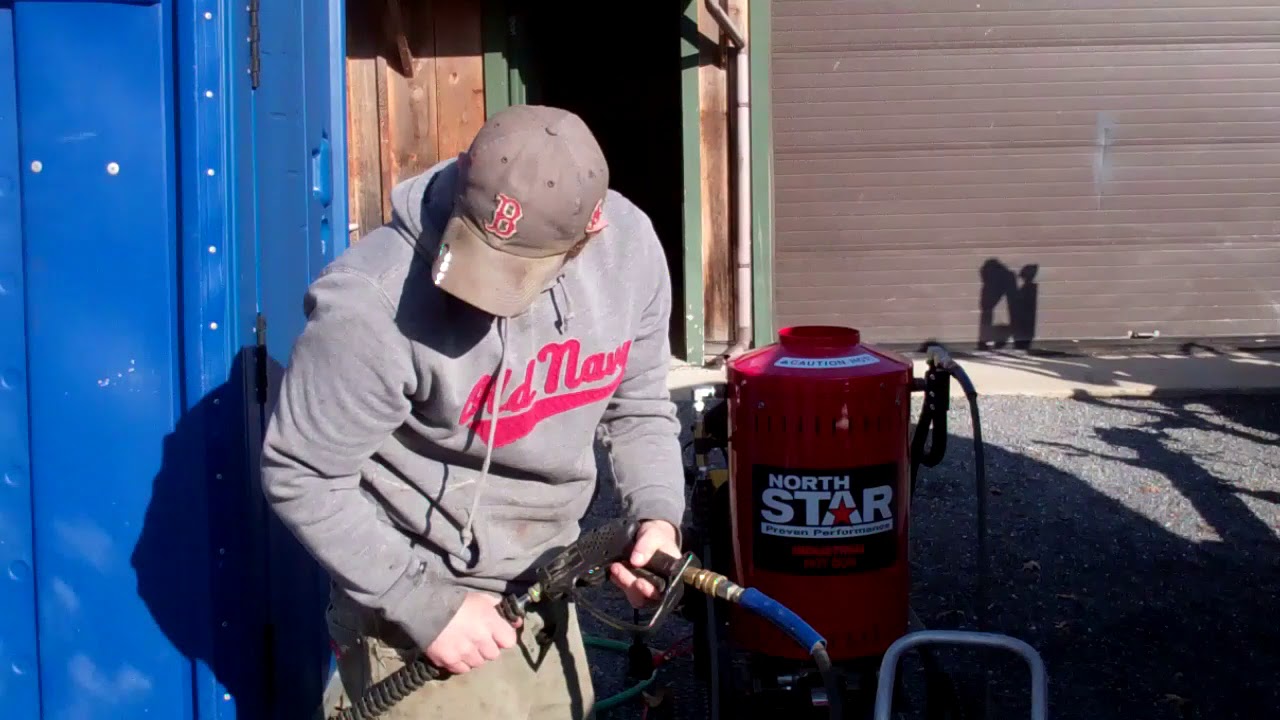Our 1957 23’ Lyman Runabout conservation project just raced past a major milestone.
- Her much needed stem, knee and gripe Dutchman repairs are complete.
- Her new quarter-sawn white oak fin keel has been fabricated, sealed with three coats of CPES and installed, bedded in 3M5200.
- Her bottom has been stripped, after re-clenching the strakes from stem to stern, which was particularly challenging as folks had just applied antifoul over and over, and over again through the years. We found upwards of 3/16” of paint on much of the hull.
- She was sanded smooth using 80 grit on our Hutchins longboard sanders.
- Fairing, using 3M Marine Premium Filler is complete, and the entire surface was sanded fair using a Festool random orbit sander and 80 grit followed by 120 grit paper.
- The ever-challenging seams between the keel and garboards were caulked.
- She was then sealed up to the waterline with three coats of CPES and primed with two coats of Pettit Special Tie Coat Primer 6627.
- RJ has stripped and polished the stone guard, prop shaft and rudder.
- The shiplap transom plank seam was caulked using Interlux Seam Compound for underwater applications.
That said she is ready for the three coats of Pettit Copper Bronze Antifouling bottom paint we will apply next.
Lyman owners have reported, and we have experienced that their round-chine hulls tend to wander when under way, especially at slower speeds. Adding the quarter-sawn white oak fin keel that is typical of many later Lymans addresses this issue simply and in a manner that is consistent with Lyman engineering.
By early next week, when her bottom will have been painted we will move to the topsides, which have been stripped, but not tightened or faired. That is the next milestone, which is now just peeking over the horizon.

